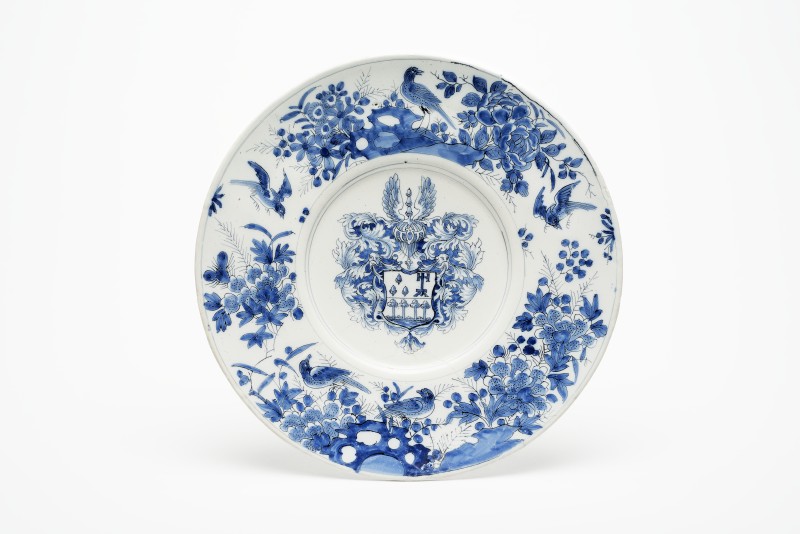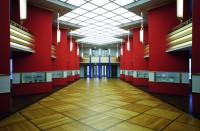Teller ohne Standring mit flachem Spiegel, kurzem Anstieg und breiter, leicht ansteigender Fahne.
Im Spiegel – von drei konzentrischen Kreisen eingefasst – quergeteiltes Wappen: oben befinden sich drei Eicheln und die Hausmarke, unten vier Bäume. Über dem Wappen Bügelhelm mit einer Helmzier aus drei Eicheln und reicher Akanthusblattdecke. Auf der Fahne drei in blühenden Büschen bzw. auf Felsen sitzende und zwei flatternde Vögel. Auf der Unterseite des Tellers vier konzentrische Kreise.
Der Teller war in acht Scherben zerbrochen (restauriert), zahlreiche Glasurabplatzungen am Rand (restauriert).
Marke in Blau auf dem Boden: „AK“ (ligiert) für Adriaen Kocks
Ankauf von Georg Wilhelm Schulz, Leipzig, 1924
en

